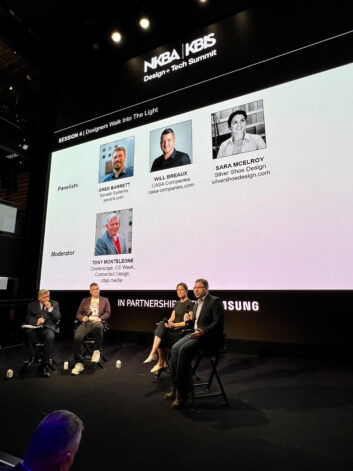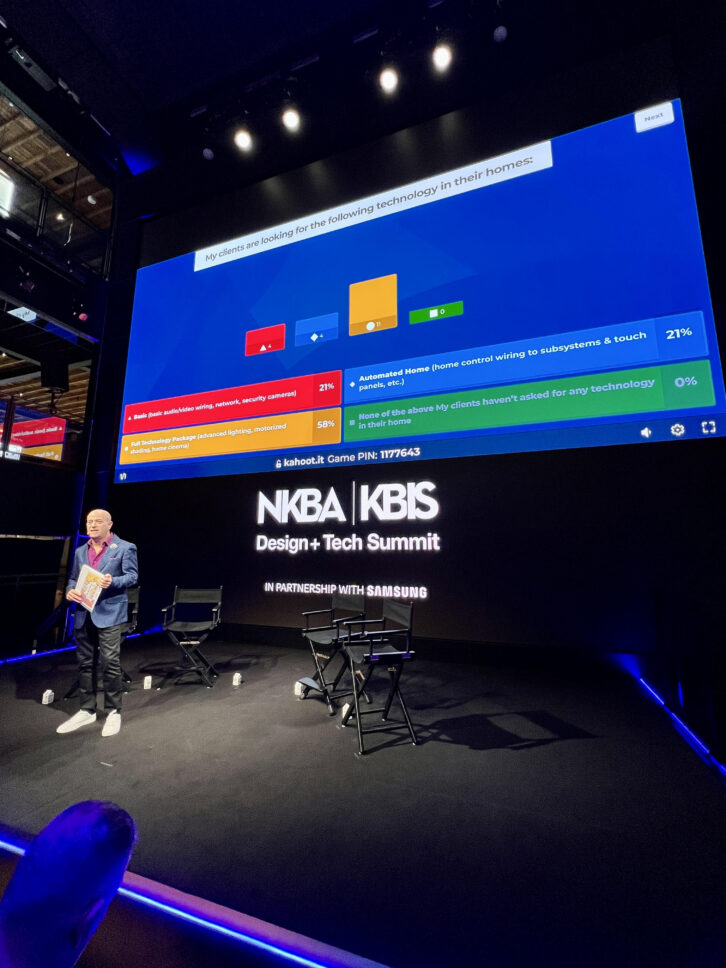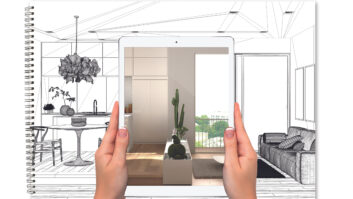As many of you know, I’m on a mission to help integrators and interior designers do better business together. What I’m finding, still, is that our tech integration community is making inroads, but we need to stay the course and be present, pleasant, and extremely supportive.

This was perfectly illustrated during the NKBA Design + Tech Summit held in July at the Flagship Samsung 837 building in NYC, where I was invited to speak on a panel titled “All Together Now: Creating a Design and Tech Strategy That Works for Everyone.” I was there alongside trade professionals like lighting designer Sara McElroy, founder and president of Silver Shoe Design, and interior designers Toni Sabatino of Toni Sabatino Style and Sharon Sherman of Thyme and Place Design, as well as integration pros Will Breaux of CASA Companies, Ed Gilmore of Gilmore’s Sound Advice, and Amanda Wildman of TruMedia. We were joined by Greg Barrett of Savant Systems and others from the design and tech integration worlds. After spending the day with attendees and listening to their stories, it was abundantly clear that design professionals want to establish meaningful relationships with integrators so they can be more confident when including tech in their projects.
In fact, in a live poll conducted during the event, 58 percent of attendees said their clients are looking for a technology package for their homes that includes advanced lighting, motorized shades, and home cinema. During one of the sessions, Sarah Larsen, Samsung VP of marketing, home electronics, noted that “71 percent of consumers expect their products to be customized and personalized.”
Think about that for a minute. If designers are saying that 58 percent of their clientele want automated lighting, motorized shades, and a home cinema experience, and if 71 percent of consumers expect their tech to be customized and personalized, how much business is potentially being left on the table by not engaging with designers?
More Secrets of Success: What Does the Future of Marketing Look Like?
Technology integrators have the ability to give people more of what they want and need. One of the most memorable comments of the NKBA Design + Tech Summit came during a session with event sponsor Samsung talking about its product lines and connectivity with mobile devices. The audience physically leaned in when Claudia Santos, Samsung director of product marketing, shared some of her favorite home technology automations that are triggered by her activities. She shared the benefits of alerts telling her about open fridge doors and how when she lifts her phone off the nightstand in the morning that the bedroom shades open and the lights come on, preparing her for the day ahead. Every designer in the audience energetically asked questions about this, as though it was a new subject being broached for the first time.
Of course, integrators do this sort of work every day, but that is exactly my point. The reaction of the design community to simple yet functional home automation routines illustrate the need to keep things simple to start with — many are unaware of the benefits of an automated home and how easy it can be to have it when the right professionals are involved. They want it, they just don’t know how to get it in a manner that works for them and their clientele.

Be the resource that helps designers understand what’s available and how to make it happen and you will garner more of their business. According to Pamela McNally, SVP, marketing & digital for the NKBA, “What resonated most with designers was the detailed, step-by-step information provided during many of the panels…they still struggle with how to engage, hire, and work with integrators. Tech is still a ‘new’ area for many and they really don’t understand how it works, so anything that can help explain what they need to know (not hugely detailed) is a good thing and a major help.”
She also shared some great insights for integrators: “Speak the language designers understand. Tech talk intimidates designers and all too often and makes them feel as if they are being talked down to. It is also very important that integrators not come across as if they are going to take the lead on the project. Designers need to be reassured that they, not the integrator, are still the main point of contact for the client — in fact, several attendees of the NKBA Design + Tech Summit told me that even when something goes wrong, they’d prefer the client reach out to them so they are still the conduit.”
In talking to Amanda Wildman after the event, she shared, “The biggest takeaway for me from the Design + Tech Summit was that the designers are interested in the tech and if we, as Integrators, aren’t there to answer the questions, support their projects, and share our knowledge, they will get it elsewhere…which is usually either DIY or inaccurate information.”
She, like Ed Gilmore, Will Breaux, and many in our community, actively participates in events like the NKBA Design + Tech Summit to share the steps required to make smart home technology understandable, relatable, and an integral part of the design process — from the very beginning — that result in a successful and seamless outcome. Being present plays a critical role in helping interior designers and their clientele appreciate what tech can do to enhance the home experience.
More Secrets of Success: How Relevant Is Your Brand?
Gilmore was quick to reiterate a very important point that he made during the event, and one that bears repeating. “After project delivery, the integrator is often the only other trade that has an ongoing relationship with the client, so being involved from the inception of the project leads to better historical knowledge, servicing, and ongoing client relationships.”
Interior designer Sharon Sherman shared this in closing: “The relationship I have with my integrator works well because we both respect each other’s professional space. We work together to enhance each other’s work to get the best result for the client. My integrator makes tech fun, functional, and playful, which I appreciate and my clients enjoy immensely.”
Sherman’s point about being playful leads me to my final point for this article. As a community, we need to do a better job of showing people how to play with their tech so they get more from their devices and enjoy more of what technology can do. When we do, we open people’s eyes to what’s possible, and, when that happens, future business is more likely to come our way, rather than the DIY way.
Curious about the NKBA Desgin + Tech Summit? Here’s a recap article and a video of the event: https://nkba.org/info/2023/07/nkbas-design-tech-summit-a-success/.







